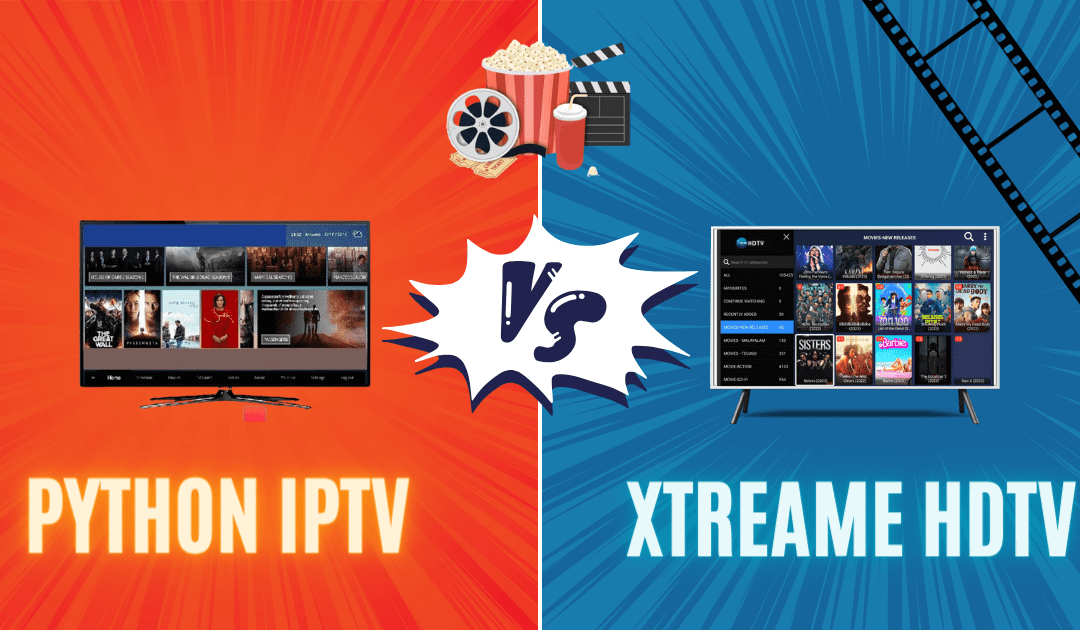In the world of digital entertainment, the way we consume content has undergone a significant transformation. Traditional cable and satellite TV services. They are gradually being replaced by more flexible and cost-effective alternatives, such as Internet Protocol Television (IPTV) solutions. Two prominent players in this space are Python IPTV and Xtreame HDTV. Each offers a unique set of features and capabilities. We’ll delve into the differences between these two platforms. It helps you make an informed decision about which one better suits your needs.
Also Read: Top IPTV Providers in Singapore
What is Python IPTV?
It is an open-source software solution. That allows you to stream live TV channels, movies, and other video content over the Internet. It utilizes the power of the Python programming language and various multimedia libraries to deliver a seamless viewing experience. One of the key advantages of IPTV is its high level of customization. Developers can modify and extend its functionality to meet specific requirements.
Key Features :
- Open-Source and Highly Customizable: Being an open-source project. It allows developers to modify the source code, add new features, and tailor the platform to their specific needs.
- Multiplatform Support: We can run on various operating systems. It includes Windows, Linux, and macOS, making it a versatile solution for users across different platforms.
- Extensive Codec Support: We support a wide range of audio and video codecs, ensuring compatibility with various media formats.
- Playlist Integration: We support the integration of M3U and XML playlists. It allows users to easily access and manage their content libraries.
- Powerful Video Player: We incorporate a robust video player with features like subtitles, bookmarks, and playback controls, enhancing the overall viewing experience.
Also Read: How to Pay for IPTV with PayPal – Best Payment Method?
What is Xtreame HDTV?
It is, on the other hand, a proprietary IPTV solution developed by a company called Xtreame IPTV. Both offer a comprehensive platform for streaming live TV channels, movies, and other video content over the internet. It is known for its user-friendly interface and advanced features. It making it a popular choice among IPTV enthusiasts.
Key Features :
- User-Friendly Interface: We boast a clean and intuitive user interface. It makes it easy for users to navigate and access their desired content.
- Powerful Content Management: We provide robust content management capabilities, allowing users to organize and manage their media libraries with ease.
- Advanced Streaming Technologies: We leverage advanced streaming technologies to deliver high-quality video and audio, ensuring a smooth and seamless viewing experience.
- Multi-device Support: We offer support for various devices, including smart TVs, Android boxes, and mobile devices, allowing users to access their content from multiple platforms.
- Parental Controls and Content Filtering: We offer parental control features and content filtering options, enabling users to restrict access to certain types of content.
Differences Between Python IPTV and Xtreame HDTV:
- Open-Source vs. Proprietary: Python IPTV is an open-source solution, allowing developers to modify and extend its functionality, while Xtreame HDTV is a proprietary platform with a closed-source codebase.
- Customization Capabilities: Python IPTV offers extensive customization options, as developers can modify the source code to meet their specific requirements. Xtreame HDTV, being a proprietary solution, has limited customization options, and users must rely on the features provided by the developers.
- Cost: Python IPTV is a free and open-source solution, while Xtreame HDTV requires a paid subscription or license to access its features and services.
- User Interface: Python IPTV’s user interface may vary depending on the specific implementation, as developers can customize it according to their preferences. Xtreame HDTV, on the other hand, offers a polished and consistent user interface across different platforms.
- Support and Updates: Python IPTV relies on community contributions and open-source development practices for support and updates, which can be irregular or unpredictable. Xtreame HDTV, being a commercial product, typically offers regular updates and dedicated support from the development team.
- Content Availability: Both allow users to access various content sources, including live TV channels and on-demand videos. However, the specific content available may vary depending on the content providers and subscriptions associated with each platform.
Also Read: All you need to know about Sky Glass IPTV
Which One Should You Choose?
The choice between Python IPTV and Xtreame HDTV ultimately depends on your specific requirements, preferences, and technical expertise. If you’re a developer or someone with advanced technical skills who values the ability to customize and extend the platform’s functionality, Python IPTV might be the better option. Its open-source nature allows you to modify the source code and tailor the platform to your exact needs.
On the other hand, if you prioritize a user-friendly experience, consistent updates, and dedicated support, Xtreame HDTV could be the more suitable choice. Its proprietary nature ensures a polished and consistent user interface across different devices, and you can expect regular updates and support from the development team.
Ultimately, both offer robust IPTV solutions, and the decision should be based on your specific needs, technical expertise, and budget constraints.
Conclusion:
In the ever-evolving landscape of digital entertainment, We have emerged as two prominent players in the IPTV space. Both offer an open-source and highly customizable solution and provide a proprietary platform with a user-friendly interface and advanced features. Whether you choose Python IPTV and Xtreame HDTV. You’ll be able to enjoy a wide range of live TV channels, movies, and other video content streamed directly over the internet. By understanding the differences between these two platforms. You can make an informed decision that aligns with your specific requirements and preferences. ensuring a seamless and enjoyable viewing experience.


